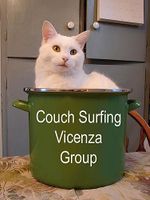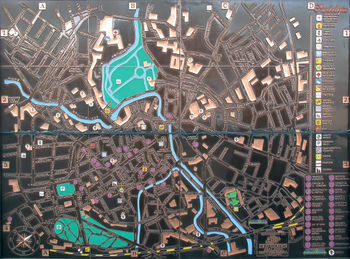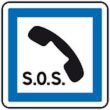Vicenza
| Italy | Main pages | Places | Other links |
|
Trustroots
{{ #if: Flag of Italy.png| |
{{ #if: *Italy |
{{ #if: Abruzzo • Arezzo • Ascoli Piceno • Bassano del Grappa • Bergamo • Bologna • Cagliari • Ferrara • Florence • Maremma & Grosseto • Lazio • Livorno • Lombardia • Lucca • Matera • Milan • Napoli • Padova • Pescara • Pisa • Rome • Torino • Trento • Treviso • Tuscany • Veneto • Venice • Verona • Vicenza|Abruzzo • Arezzo • Ascoli Piceno • Bassano del Grappa • Bergamo • Bologna • Cagliari • Ferrara • Florence • Maremma & Grosseto • Lazio • Livorno • Lombardia • Lucca • Matera • Milan • Napoli • Padova • Pescara • Pisa • Rome • Torino • Trento • Treviso • Tuscany • Veneto • Venice • Verona • Vicenza}} |
{{ #if: 245|*BW group}} {{ #if: 207|*CS group}} {{ #if: Italy|*Wikipedia}} {{ #if: Italy|*Wikivoyage}} {{ #if: Italy|*Hitchwiki}} |
| Vicenza | Main pages | Smaller areas | Other links |
|
{{ #if: |[[file:|100x80px|]]}} |
{{ #if: |}} |
{{ #if: |}} |
{{ #if: 190|*BeWelcome group}} {{ #if: 7229|*CouchSurfing group}} {{ #if: Vicenza|*Wikipedia}} {{ #if: Vicenza|*Wikivoyage}} {{ #if: Vicenza|*Hitchwiki}} |
Vicenza is a medium-sized town located in North Eastern Italy, with a population of 120,000. The city and the surrounding countryside and hills are particularly famous for the many works, and particularly the Villas, by Palladio. It is included in UNESCO's list of world heritage places in 1994.
History
Vicenza is an ancient city. In 157 b.C. it entered into the roman empire with the name Vicetia or Vincentia. In 889 it was destroyed by Ungari, and in 1001 it became an episcopal stronghold. In 1404 it became part of the Republic of Venice.
Vicenza was a prosperous town under Venetian rule, and its pride was demonstrated in fine architecture, much of which still survives. Its 'unique appearance,' largely owing to the work of influential sixteenth-century architect Andrea Palladio, has led to the town's designation as a UNESCO World Heritage Site: City of Vicenza and the Palladian Villas of the Veneto. During the XIX century, after the fall of Napoleon, the city was taken by Austria, but in 1848 the citizens rebelled against the austrian government and in 1866 it finally became part of the Kingdom of Italy.
After Palladio, Vicenza is most famous for its trade in precious metals, and it's also known as the 'City of gold'.
Couchsurfing in Vicenza
As of May 2009, there are more than 100 Couchsurfers in Vicenza, or in the nearbies. The local CS community is quite alive, organizing meetings and activities, and sharing close links with Verona and Padova communities.
Meetings
Once a month, on the 15th, couchsurfers of Vicenza and visiting Vicenza meet for the Cat Day, usually in a public place like a pub, a pizzeria or a garden. Refer to the Events page to find out whereabouts and other infos. Everybody is welcome.
Emergency couch
In case you find yourself in an emergency situation like your planned host is not reacheable, the hostel is full, or something similar (not because you did not properly search for a couch), you will find some help on the Veneto SOS Group.
Getting to Vicenza
By plane
The most convenient airports for Vicenza are in Treviso, Venice Marco Polo and Verona. If you're arriving from Marco Polo airport, take a connecting bus to Mestre (the Venice mainland station) where you can pick up the train.
- Bus from Treviso airport to Treviso train station and viceversa (bus line "ACTT" n.6): Mondays to Saturdays and Sundays and national holidays
- Coach Service Treviso airport
- Bus service from Venice airport to Venice - piazzale Roma ("ACTV" bus line n.5)
- Bus service from Venice airport to Mestre - railway station ("ACTV" bus line n.15)
- Coach Service Venice Marco Polo airport
By car
On the A4 highway "Milano-Venezia", take exits "Vicenza Ovest" or "Vicenza Est" and follow signs to city center; on the A31 highway "Valdastico", take exit "Vicenza Nord" and follow signs to city center.
By train
Vicenza can be reached in 45 minutes from Venice by taking one of the faster and most expensive trains; a cheaper option will take just over an hour. Padua is 20 minutes away by rail. Coming from Treviso, travellers will sometimes have to change at Mestre, although there are also direct 'stopping' trains; either way, the journey will take you just over an hour. The rail journey from Verona takes between 25 and 45 minutes, again depending on the category of train. Check the website of italian railways for shedules and fares.
Going around in Vicenza
Vicenza's city center is quite small, so it can be walked easily (especially considering that the very city center is forbidden to cars).
By bus
Vicenza is well served by a bus system, reaching every part of town. Buses are orange, single deck. A 90 minutes ticket costs €1,20, while a pass for the whole day costs €5,10. There are multirides tickets available, too (check prices and availability on AIM website). Tickets are sold at tobacconists, at newsagencies, at some atm and at the bus station on the side of the railways station.
By bike
Cycling through the center is quite easy, since there are few cars annoying you; but the bycicle will be really useful to visit the surroundings, or to reach some of the villas.
There's a bicycle way going along Riviera Berica, passing by villa Rotonda and reaching Longare.
Some itineraries are listed on this page:
- the Lake and "La Rotonda" - 35km - 2h 30'
- the Ride of Silence
- not just Villas - 27km - 2h
- in the Heart of the Berici - 62km - 6h
- from Villa to Villa in lower Vicentino - 76.5km - 6h
- Palladian horizons - 65km - 5h 30'
- the City of Chess - 72km - 7h
Visiting Vicenza
While one day is more than enough to visit the city center, in case you want to see Palladio's villas or the surrounding area you will probably need at least 2-3 days, and a car. There are two tourist offices (APT) in town: one is in Piazza dei Signori, opposite the Basilica Palladiana; the main one is in piazza Matteotti, just on the right of the entrance of Teatro Olimpico. They provide maps and brochures in different languages, and a lot of information about Vicenza and the whole province.
Palladio's works
Vicenza is home to twenty-three buildings designed by Palladio. The famous ones include:
- The Villa Capra (also known as "La Rotonda"), located just outside the downtown area;
- The Basilica Palladiana, centrally located in Vicenza's Piazza dei Signori, of which Palladio himself said that it might stand comparison with any similar work of antiquity;
- The Teatro Olimpico, designed for the Accademia Olimpica. Construction had started on this project when Palladio died in 1580. The wooden scenes are by Scamozzi;
- Palazzo Chiericati, home of the Town pinacotheca;
- Palazzo Barbaran da Porto, home of the Museo Palladio;
- Palazzo del Capitaniato, home of the Town council;
- Palazzo Porto in Piazza Castello];
- Palazzo Thiene Bonin Longare;
- Palazzo Thiene;
- Villa Gazzotti Grimani, in the nearby Bertesina.
Churches
- The cathedral, dating from early in the 11th century, and restored in the 13th, 16th, and 19th, possesses numerous pictures and sculptures, nearly all of them by Vicentine artists (Cittadello, Celestia, Liberi, Ruschi).
- The church of Araceli (1244), by Guarino Guaroini, formerly belonged to the Clarisses, contains statues by Orazio Marinali and Cassetti, and paintings by Tiepolo.
- The churches of the Carmini (1372) and St. Catherine (1292), formerly belonging to the Humiliati, possess notable pictures.
- Santa Corona (1260) was built by the Dominicans after the death of Ezzelino, and contains pictures by Montagna (The Magdelene), Bellini (Baptism of Christ) and Veronese.
- Santa Croce (1179)
- SS. Felice and Fortunato (8th century)
- SS. Filippo and Giacomo (12th century)
- S. Lorenzo of the Friars Minor (1280), in the Gothic style, contains the tombs of many illustrious Vicentines.
- In the cloister of S. Maria of the Servites (1319) took place the miracles of St. Philip Benizi de Damiani.
Secular buildings and others
- Villa Valmarana "ai Nani", belonging to the Valmarana family and taking its name from the statues of dwarves (nani) which decorate its garden wall; frescoes by Tiepolos.
- The Torre Bissara (clock tower) (1224-1446).
- The Biblioteca Civica Bertoliana, public library founded by Count Giovanni M. Bertolo.
- Casa Pigafetta, house of the historian travelmate of Ferdinando Magellano.
- The Pinacoteca Civica houses mainly Vicentine paintings in the Palladian Palazzo Chiericati.
- corso Palladio
- piazza Matteotti
- contrà Porti
- ponte degli Angeli
Parks
- giardini Salvi
- parco Querini
Nearbies
We strongly recommend visits to nearbies Bassano del Grappa and Marostica (reachable by car or bus), and to Padova, Verona and Treviso (by car, train or bus); Venice is just an hour away by train.
Guides
Free brochures about Vicenza can be found at the Tourist Information Centers. Other useful guides:
- "Vicenza and its Province: The city and the village of Andrea Palladio", published by the Touring Club of Italy.
- If you're an architect or architecture student, Caroline Constant's "The Palladio Guide" is an indispensable companion.
- Jonathan Buckley and Hilary Robinson's "Venice: The Rough Guide" has 15 pages of sightseeing and practical information for Vicenza and its immediate surroundings
- Dorling Kindersley's "Venice & the Veneto Eyewitness Guide" and Fodor's "Exploring Venice" have enough information (about five pages each) for daytrippers.
Internet
As of May 2009, a free wi-fi service is available in Piazza dei Signori and Piazza Matteotti. At the Bertoliana public library (contrà Riale, close to Corso Palladio), and in most of the other Vicenza's libraries, there's public access to the Internet. Same for the Informagiovani agency, at Ponte degli Angeli.
Eating out
- Cheap and tasty Napoli's pizza can be found at Vittorio's, close to Porta Monte, right in front of the new tribunal.
- Just behind the Porta Castello door there's a selfservice restaurant, usually offering cheap buffet in the evening (no meat).
...
Alternative accomodation
If you are unable to find a couch to crash on, we suggest you to check the availability of the only Vicenza City Hostel, located in Via Giuriolo 9, close to Matteotti Square (piazza Matteotti) - 20 minutes walking from train station. It offers beds and breakfast with prices starting from 20.00€ and it's located at the very entrance of the ancient city centre.
In case of emergency
- Generale emergency: 113 (national)
- Police: 112 (national) - (+39) 0444 337511 (Questura di Vicenza, viale Mazzini 213)
- Medical emergency: 118 (national)
- Hospital: (+39) 0444 753111 (via Rodolfi 37, Vicenza)
- Duty doctor: (+39) 0444 567228
- Fire brigade: 115 (national)
External links
- Interesting info about some of the interesting place in Vicenza and around
- List of Vicenza's villas
- Short guide to Vicenza
- Practicalities about Vicenza
- Things to do in Vicenza




